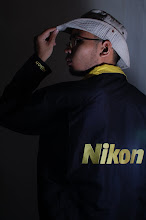baka makatulong ito sa inyo.. lol..
Solar Eclipse photography has become popular among solar eclipse viewers as most everyone wants to have a souvenir image of the eclipse for them to share to fellow amateur astronomers or relatives and friends after they return home.
Almost any type of camera can be used to capture this rare event but single lens reflex cameras offer interchangeable lenses and zooms, thus they are more preferred for use by serious astronomers and photographers.
Consumer digital cameras have become more affordable in recent years and many of these can be used to image the eclipse as well. The digital single lens reflex camera (DSLR) is now mostly replacing the old SLR systems in the market lately. The primary difference is that the imaging chip in most DSLR is only about 2/3 the area of that of a 35mm film frame which means the Sun’s relative size will be about 1.5x larger in the DSLR so a shorter focal length lens can be used to achieve the same angular coverage compared to a 35-mm SLR camera.
For full disk photography, a lens or a telescope that has a focal length between 500-2000 mm in 35 mm format will be suitable for your needs. However, if one plans to image the inner corona of the Sun during totality, focal lengths between 1000 mm-1500 mm is most suitable, while to image the outer corona, a focal length of 1000 mm or less is your best choice to capture the longer coronal streamers. Of course, the use of a solar filter is a MUST during the partial phases and should only be removed a few seconds before second contact and MUST be installed again a few seconds after 3rd contact.
Exposure range to capture the Bailey’s Beads, prominences, chromosphere, inner and outer corona varies widely depending on your lens or telescope f/ratio so the use of the full range of the camera’s shutter speed is highly recommended. With the totality duration of more than 5 minutes, one can have the time to play along various exposures to get the optimal exposure during totality.
The use of point-and-shoot digital cameras can also be used for the eclipse, but the best types should have a manual shutter exposure for you to use, and not that of the cheaper automatic exposure digicams.
Video cameras can also be used to capture the entire eclipse in real time than still cameras but the resolution of the frames are not as good as what the still camera can provide you.
*got this from astronomical league of the philippines site..http://www.astroleaguephils.org/archive/news/090722tse_news.html
************************************************************************************
*actually bukas partial eclipse lang tayo.. 49.3% lang makikita sa eclipse..
ito details..
********************************************************************************************
PHILIPPINES OBSERVING GUIDE
Over here in the Philippines, we will be able to observe a partial solar eclipse. Below are the estimated contact timings of the eclipse in some cities of our country:
MANILA , PHILIPPINES (14 deg 35’ N , 121 deg 00’ E)
| Contacts | Time (PST) | Altitude | Azimuth |
| First Contact | 08:33:01.3 | 40 deg | 76 deg |
| Max Eclipse (49.3%) | 09:43:57.6 | 57 deg | 75 deg |
| Fourth Contact | 11:01:51.6 | 74 deg | 66 deg |
*good luck na lang siguro sa inyo.. lol..
sa tingin ko dot lang makikita ko pagyung 55mm kyut lens gamit ko.. wahahaha..
ingatan niyo rin sensors niyo, alam niyo naman nangyayari pagnagshoot ka directly sa araw di ba????

putek, nose bleed
ReplyDeletegoodluck. di ko masisikmura pag sumabog sensor ko sa ganitong style hahaha!-ernest
ReplyDeleteyun nga eh.. hahahaha.. :))
ReplyDeletepero meron daw ata sa MOA na observation..
parang gusto ko nga pumunta eh..
yes... its TOTAL NOSE BLEED..
ReplyDeleteyung chart lang talaga tinignan ko..
*di ba me ND8 filter ka, im not sure kung kaya yun..
IR + ND8 + CPL :D
ReplyDeletegrabe.. IR pa nga lang wala ka na nga makita eh.. wahahahaha :)))
ReplyDeletefilter adik hahaha! grabe sobrang wala ka na talaga nakikita doon. kuha nalang ako film tingnan ko nalang. hahaha photographic memory nalang-
ReplyDeleteactually, hinahanap ko nga ngaun yung disposable film camera ko.. wahahaha.. mas safe pa yun.. :P
ReplyDeleteumaga ba yan? asteg ah
ReplyDeletehay sige titignan ko nalang ang mga pictures nyo. asa lang na may makukuha ako LOL
ReplyDeleteginawa ko yung nsa chart.. fail eh :)) i did wat "i think" is good for my sensor
ReplyDeletesyang! ngayo ko lang nakita ang post na ito, tapos na ang eclipse e! pero, oks lang, kitlens lang dn kc gamit ko... saka nose bleed nga hehe =D
ReplyDelete